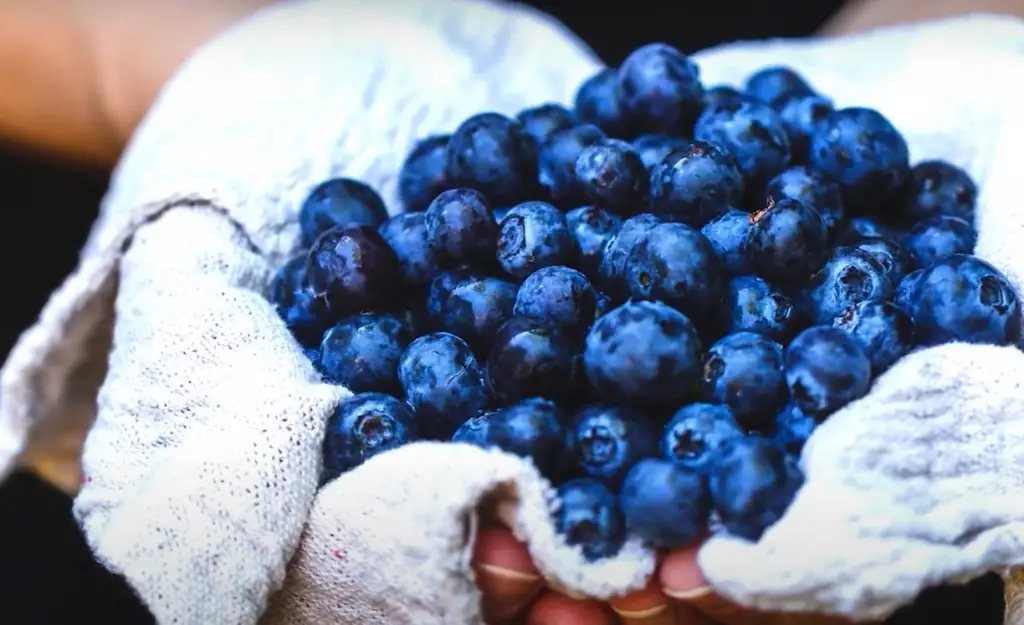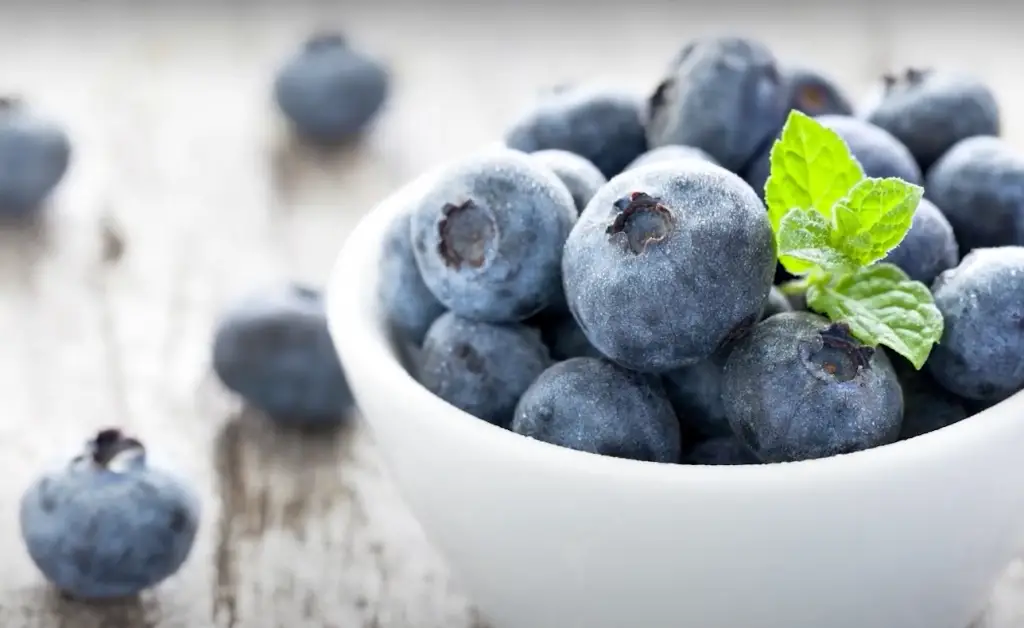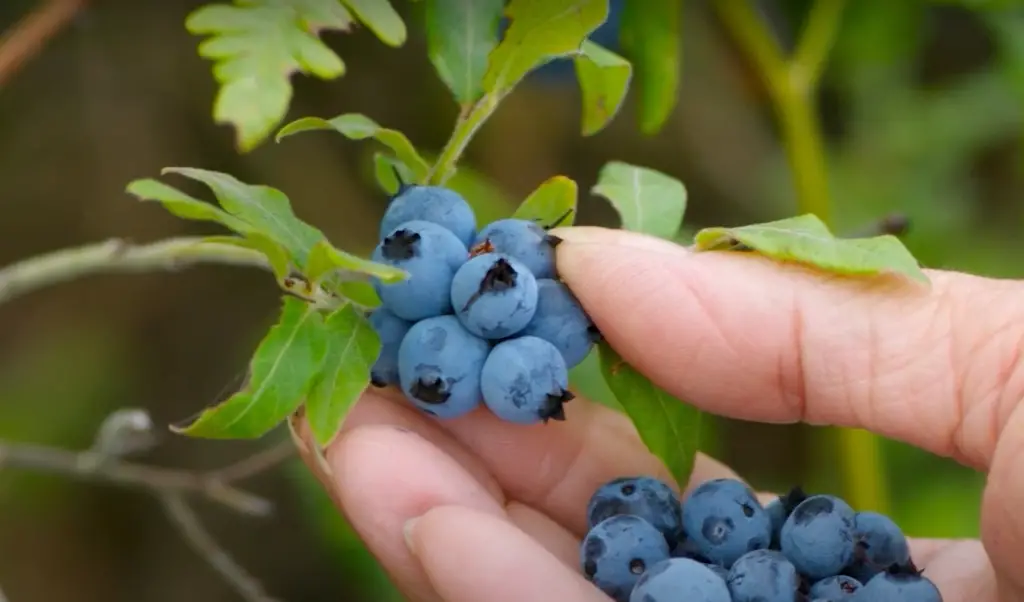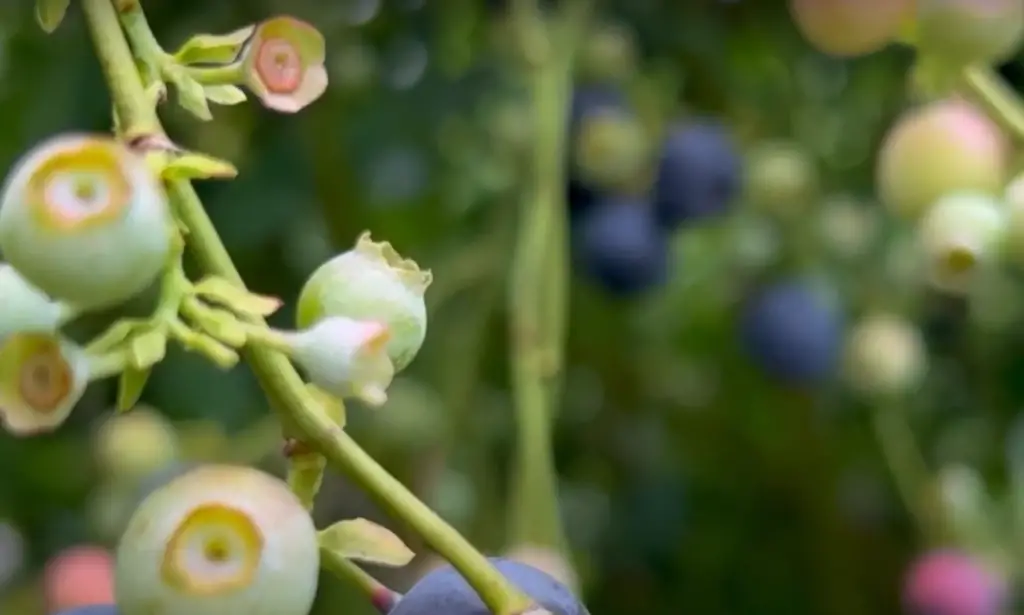Are you looking to create an impressive garden with blueberry bushes thriving in abundance? If so, one of the most important things that you need to consider is the companion plants for your blueberries. Knowing which companion plants are beneficial and which ones should be avoided can make all the difference when it comes to keeping your blueberries healthy and ensuring they reach their full potential. To help you get started, here is the ultimate guide to choosing the best companion plants for blueberries.
What Is Companion Planting?
Companion planting is the practice of intentionally pairing specific types of plants together in order to achieve a desired result. This could be for pest control, disease prevention, better soil nutrition, or improved pollination. By arranging your garden in this way, you can create an environment where all of the plants work together as a unit and benefit from each other’s company!

When it comes to blueberries specifically, there are some great companion plants that can provide many benefits including increased yields and improved flavor. Let’s take a look at some of the top options!
Where to Plant Blueberry Bushes
Blueberry bushes prefer acidic soil and need full sun, so they’re best planted in an area with rich, well-draining soil that gets 8 hours or more of sunlight. If you have sandy, loamy soil, you can add organic matter to help retain moisture and make the soil more acidic. Blueberries can also be grown in containers, which makes it easy to move them around or give them the right light level if your garden is shady.
Avoid using chemical fertilizers as these can damage the roots of blueberries.Companion Plants to Grow With Blueberries
Companion planting is a great way to get the most out of your blueberry bushes. Certain plants have been found to be beneficial companions for blueberries, helping with pollination, pest control, and even nutrient availability. Here are a few of our favorite companion plants for blueberries.
Basil
Basil is a great companion for blueberries, as it helps to repel pests and can also provide important nutrients. Basil contains an aromatic oil that deters some insects, while its strong scent may help disguise the smell of the blueberry bushes and attract beneficial insects like ladybugs. Additionally, basil can provide nitrogen and other essential nutrients to the soil around blueberry plants. Planting basil near your blueberry bushes will help keep them healthy and productive. When harvesting basil for cooking or other uses, be sure not to take too many leaves from any one plant so that all of your herbs remain productive!
Thyme
Thyme is one of the best companions for blueberries and makes a great addition to any berry garden. Its strong scent helps repel many common pests, including whitefly, black vine weevil, and spider mites. The flowers also attract beneficial insects like hoverflies and lacewings that will help keep your blueberry crop healthy. Plus, it’s an attractive plant with small leaves and pretty pink or purple flowers that will add color to your garden. Plant thyme near your blueberry bushes in well-drained soil with plenty of compost added for nutrients. Water regularly and prune occasionally to encourage bushier growth. With its pest-repelling powers and lovely appearance, there’s no doubt thyme is a perfect companion for blueberries!
Parsley
Parsley helps to repel harmful insects and improve the quality of the soil. Parsley also contains trace amounts of vitamins and minerals which can benefit your blueberry plants.

For best results, plant parsley near your blueberry bushes, but be sure to keep it away from any other vegetables or fruits in your garden as they may suffer from poor pollination. Additionally, try planting some deep rooted parsley varieties such as Giant Italian Parsley or Curled Leaf Parsley for maximum success with your blueberries!
Dill
Dill helps attract beneficial insects like hoverflies and parasitic wasps which help reduce harmful pests. In addition, dill grows quickly and can reach heights of up to three feet tall. Planting dill next to your blueberry bushes will also provide additional shade for the plants, helping keep them cool in hot weather. However, you should keep an eye out for any new growth that appears near your blueberry bush and make sure not to let the dill take over! Finally, if your soil is too alkaline for blueberries, adding a few sprigs of dill around the base of your plants could help balance out the pH level.
Borage
Borage is a popular companion plant for blueberries, as it encourages pollinator activity. Borage also adds nutrients to the soil and helps protect nearby plants from pests like aphids and caterpillars. It can be planted alongside your blueberry bushes in early spring, or you can sow seeds directly into the ground. Borage grows quickly and easily — just make sure not to overcrowd it too much, as this will reduce its effectiveness. To ensure optimal results, keep an eye on the flowering and growth of your borage plants throughout the season. If they become too tall or outcompete other plants in the area, consider trimming them back to give other surrounding vegetation room to grow. With proper care and attention, borage will bring beneficial insects to your blueberry patch, as well as help increase soil fertility and attract pollinators.
Strawberries
Strawberries help keep weeds away, improve pollination and add nitrogen to the soil, making them an ideal choice for blueberry gardeners. Planting strawberries around your blueberry bushes can also provide you with a tasty snack while you’re tending your plants!
Everbearing varieties will frequently produce throughout the summer months and into late autumn, compared to June-bearing types which produce just once in mid-summer. Additionally, consider spacing your strawberry plants at least 18 inches away from the base of each blueberry bush so that their root systems don’t interfere with each other. By following these simple tips, you can have a delicious strawberry harvest alongside your blueberry harvest!Pineberries
Pineberries are a relative of the blueberry family and make an excellent companion plant for a blueberry bush. Not only do they offer additional beauty to your garden, but their roots also help to protect the soil from erosion and add additional nutrients that can benefit both plants. Pineberries have white flowers with pink undertones and long, slender stems reaching up to two feet in height.

The berries themselves look like small strawberries but have a unique flavor that combines sweet pineapple with tart strawberry. Planting pineberries near your blueberries will create an interesting contrast as well as provide benefits to both plants. If you plan on harvesting your own pineberries, be sure to leave some in place so they can continue to cross-pollinate with the blueberries and help to keep them healthy.
Cranberries
Cranberries make an excellent companion for blueberries, as they share a number of beneficial characteristics. Firstly, cranberries are among the few plants able to tolerate acidic soil conditions and will therefore grow well in soils that are too low in pH for other plants. Secondly, cranberries help reduce problems with weeds as their dense foliage helps to keep them at bay. And lastly, cranberries help to improve the overall quality of the soil by adding valuable nitrogen into it through their roots. As an added bonus, when grown close together, blueberry and cranberry plants can even benefit from cross-pollination. So if you’re looking for a great companion plant for your blueberry patch, don’t forget about the humble cranberry!
Coneflowers
Coneflowers, also known as echinacea, are a great companion plant for blueberries. These beautiful flowers will attract pollinators to your blueberry garden, helping to ensure successful fruiting and flowering. Coneflowers are easy to grow, coming in a variety of colors and sizes and requiring little maintenance once established. They do best in full sun and sandy soil with good drainage. To maximize the effectiveness of this companion plant, place them near your blueberry bushes but far enough away that they won’t become overrun by the roots of the larger plants. With their bright blooms and tough constitution, coneflowers can be relied upon to add beauty and provide beneficial pollination services for years to come!
Daisies
The daisy flower is an important source of nectar for honeybees, and its roots help aerate the soil. Daisies also have a natural “weeding” effect since they release a toxin that helps prevent weeds from growing nearby them. Not only that, but they add beautiful pops of color to any garden! Plant these low-maintenance flowers in the same area as your blueberry bushes for an attractive and beneficial companion plant.
Azaleas
Azaleas and rhododendrons are excellent companion plants for blueberries. These lush, evergreen shrubs provide the perfect backdrop to any blueberry planting. Azaleas have beautiful, brightly-colored flowers that bloom in the spring, while rhododendrons have larger blooms that appear later in the season. As they’re both acid-loving plants, these two make great neighbors for your blueberries, and their long flowering period gives you plenty of eye-catching colors all through the summer months.

When planted together with your blueberry bushes, azaleas offer a low-maintenance way to create an attractive garden scene. Plus, because they’re evergreens, they can also provide shelter for your blueberry bushes in the winter.
Lilacs
Lilacs can help protect plants against pests such as aphids and mites. Planting them near blueberries also improves pollination, thus increasing berry yield. When choosing a variety of lilac to use for companion planting, opt for one with large flowers like Syringa vulgaris. To ensure optimal growth, make sure to provide your lilac with full sun and well-drained soil. Additionally, prune the shrub once a year in late winter or early spring to keep it healthy and encourage blooming. With proper care, these fragrant beauties will be an attractive addition to any landscape!
Rhododendrons
When considering companion plants for blueberries, it’s important to consider the Rhododendron family. These shrubs, which come in a variety of colors and sizes, provide dramatic color and texture for any garden. They prefer acidic soils and will thrive under the same conditions that are perfect for your blueberry bushes. Planting rhododendrons close by can also help keep away insect pests that may otherwise attack your berries. Choosing a low growing variety like ‘Raspberry Glow’ will add an interesting background for your blueberries without competing with them or blocking light from reaching the ground beneath them. Make sure you give these plants plenty of water as they have shallow root systems!
Trees and Shrubs that Grow Well with Blueberries
Trees and shrubs make great companions for blueberries. They can provide shade to protect the berries from scorching sunlight, as well as offer support for trellising or an espalier system. When selecting trees and shrubs to pair with your blueberry bushes, look for varieties that don’t require too much pruning or maintenance. Here are some suggestions.
Arborvitae
Arborvitae is one of the best companion plants for blueberries. It is an evergreen shrub and provides year-round interest in the garden. Its dense foliage provides shade for blueberry bushes, helping to keep them cool during hot summer months.

The branches also help protect the berries from birds and other wildlife that may be attracted to their sweet taste. Arborvitae has been known to naturally repel deer, which can be a boon when growing blueberries in areas where deer are present. Additionally, it helps provide structure and texture to the landscape, making it visually pleasing as well as functional. Be aware that arborvitae can grow quite large over time so they should not be planted too close to your blueberries. Plant them at least five feet away from the bushes to ensure that they have plenty of room to grow without crowding your blueberry plants.
Blue Spruce
Blue spruce is a great companion plant for blueberries. Its dense, textured foliage provides the perfect backdrop to contrast against the bright berries. Not only that, but it also helps reduce pest and disease damage in its vicinity due to its strong smell and prickly needles. It is an excellent choice to protect your blueberry plants from any potential problems that might be lurking in your garden!
When planting near your blueberry bushes make sure you give them plenty of room so they get enough sunlight and water without competing with each other for resources. Planting too close can cause both plants to stress and negatively affect their growth. Additionally, if you want more protection around your berries, prune the lower branches of the spruce regularly to create a strong fence-like barrier.
Overall, the blue spruce is a great choice for keeping your blueberry bushes safe without taking away from their beauty! With its unique and lush foliage, it can really add character to your garden while providing valuable protection from potential pests and diseases. So if you’re looking for a reliable companion plant for your blueberries, definitely consider adding some of these beautiful trees to your landscape.
Dogwood Trees
Dogwood trees (Cornus spp.) are wonderful companion plants for blueberries. Not only do they provide shade and shelter from the harsh summer sun, but their bright white flowers create a stunning display in spring and early summer. Dogwoods also have edible fruits that can be used to make syrups, jams, jellies, and sauces. Planting dogwoods near your blueberry patch will attract birds and other wildlife that feed on the berries, helping to keep pests away from your crop. When selecting a dogwood tree for your landscape, choose one with bright yellow-orange or reddish fall foliage for added beauty. Another benefit of dogwood trees is that they require minimal maintenance and care; once established, just give them a good watering and prune occasionally to keep them shapely. With these simple steps, your dogwood can provide shade, beauty, and protection for your blueberry bushes for years to come.
Junipers
Junipers (Juniperus spp.) are evergreen shrubs that can provide shade and shelter in the heat of summer while also adding a lush green backdrop to your edible landscape. Junipers come in a variety of shapes, sizes, and colors, so you can find one that fits just about any garden design.

Junipers also feature small aromatic berries that birds love to eat, bringing beneficial wildlife into your yard to help keep pests away from your blueberry patch. Junipers require minimal maintenance; however, regular pruning helps them maintain their shape and size. With good care, junipers will give you years of enjoyment while protecting your blueberries from harsh weather conditions.
Pine Trees
Pine trees (Pinus spp.) are a classic addition to any landscape, and they make great companions for blueberries. Not only do they provide shade and shelter from the sun’s rays in summer, but their fragrant needles also create an inviting atmosphere in your edible garden. Pine trees also feature attractive cones that can be used as decoration or mulch around your blueberry patch. You can find pine trees in many sizes and shapes, so it’s easy to find one that will fit perfectly into your garden design. Pine trees require minimal maintenance, just give them a good watering once a week during dry spells and trim back overgrown branches occasionally. With proper care, pine trees can provide shade and protection for your blueberry bushes for years to come.
Bad companion plants for blueberries
When it comes to companion planting, there are certain plants that can be bad for blueberries. These should definitely be avoided when planning a blueberry garden.
Tomatoes
Tomatoes and blueberries have different soil requirements, so they are not a good fit for companion planting.
Peppers
Peppers also require more nitrogen in their soil than blueberries do, so they are not a good choice for companion planting with blueberries.
Eggplants
Eggplants have the same soil requirements as tomatoes and peppers, so they should also be avoided when companion planting with blueberries. Eggplants can also attract beetles that may feed on both eggplant and blueberry leaves, which can harm the plants.
Potatoes
Potatoes are a very common garden crop, but they should not be companions planted with blueberries. Potatoes can attract pests such as potato beetles and Colorado potato beetles.
Brussels Sprouts
Brussels sprouts also need more nitrogen in their soil than blueberries do. They can also be prone to disease and pest infestations.
Kale
Kale has the same soil requirements as Brussels sprouts, so it should also be avoided when companion planting with blueberries.
Broccoli
Broccoli also needs more nitrogen in its soil than blueberries and can attract the same pests as kale.
Cabbage
Cabbage requires a higher amount of nitrogen in its soil compared to blueberries. However, it is susceptible to pests like cabbage worms and aphids.
Cauliflower
Cauliflower has the same soil requirements as cabbage, so it should also be avoided when companion planting with blueberries.

Cauliflower can also attract pests such as cabbage worms and aphids.
Melons
Melons require a higher amount of nitrogen in the soil compared to blueberries, but they may also attract pests like cucumber beetles. This makes them a bad companion plant for blueberries.
Lettuce
Lettuce has the same soil requirements as melons, so it should also be avoided when companion planting with blueberries. Lettuce can attract aphids and mites, which can spread to the blueberry bushes if they are planted nearby.
Collard Greens
Collard greens have the same soil requirements as lettuce, so they should also be avoided when companion planting with blueberries.
Oregano
Aphids can be attracted by oregano, which is an herb. It is advisable to avoid using it when practicing companion planting with blueberries.
Sage
When companion planting with blueberries, it is advisable to avoid planting sage as it can attract aphids.
Tarragon
It is best to avoid planting tarragon with blueberries as tarragon is a herb that may attract pests like aphids.
Marjoram
Marjoram is yet another herb that can attract aphids, so it should also be avoided when companion planting with blueberries.
Mint
Mint is a popular herb, but it can attract aphids. Therefore, it should be avoided planting with blueberries.
Beets
Beets need more nitrogen in their soil than blueberries do, and they can also attract pests such as flea beetles. This makes them an unsuitable companion for blueberries.
Peas
Peas also require more nitrogen in their soil, and they can be prone to disease and pest infestations. Therefore, they should be avoided when companion planting with blueberries. [1]

Overall, it is best to avoid these plants if you are looking for the best companion plant for your blueberry bushes. Doing so will help ensure that your blueberry bushes get all of the nutrients that they need while avoiding any potential problems associated with having bad companion plants nearby.
FAQ
What should you not plant next to blueberries?
It is generally inadvisable to plant anything next to blueberries that belongs to the Brassicaceae family. This includes cabbage, broccoli, cauliflower, Brussels sprouts, kale and radishes. These plants tend to exude a chemical into the soil that interferes with the health of blueberry plants. Tomatoes should also not be planted near blueberries as they can introduce verticillium wilt into the area which is highly detrimental to blueberries. In addition, potatoes are susceptible to verticillium wilt so it’s also best not to plant them close by. Additionally, onions and garlic may stunt the growth of blueberries so these should also be kept away from blueberry patches. [2]
What is the best cover crop for blueberries?
Cover crops are great for protecting blueberry plants from weeds, soil erosion and leaching of vital nutrients. They also help increase the organic matter in the soil. Oats or winter rye is often considered to be the best cover crop for blueberries as they provide a good amount of nitrogen to the soil while suppressing weed growth. Another option is clover, which can reduce some weeds and it fixes nitrogen into the soil as well. Other cover crops such as wheat, barley and buckwheat can work too but may need more fertilizer to thrive. Make sure you use a pre-emergent herbicide before planting any cover crop to prevent the germination of weed seeds that might already be present in the soil. Once your cover crop is established, you can mow it to keep the growth down or till it into the soil. However, you should avoid tilling in cover crops during the growing season as blueberries are sensitive to disturbance of their shallow root systems. [3]
What is the best planting mix for blueberries?
Blueberries grow best in loamy soil, rich in organic matter. The soil should be well drained and acidic, with a pH of 4.5 to 5.2. To ensure the soil is suitable for blueberry plants, add compost or other organic matter like peat moss to the planting mix when you prepare your garden bed. Additionally, adding sulfur can help lower the pH if it’s too high. You can also incorporate fertilizers which include phosphorus and potassium as this will give your blueberries an extra boost of nutrition! Finally, make sure that you are watering your plants regularly and evenly throughout their growing season; this will help keep them healthy and productive! [4]
What are the best blueberry bushes to cross pollinate?
Choosing the right blueberry bushes to cross pollinate is key for successful companion planting. Cross pollination produces better yields and bigger berries, so you’ll want to choose varieties that are compatible with one another.
Highbush blueberries are the most widely grown type of blueberry bush in North America, but there are other varieties such as rabbiteye, lowbush, and southern highbush blueberries. All of these types can be used for companion planting with some exceptions. For example, early-ripening varieties may not cross-pollinate well with late-ripening ones since they’re no longer flowering at the same time.
When choosing which plants to use for companion planting, look for a mix of early-ripening and late-ripening varieties to ensure the maximum amount of pollen is being exchanged. Some popular highbush varieties for cross pollination include:
- ‘Bluecrop’ – a midseason variety that produces large, sweet fruit
- ‘Berkeley’ – an early season variety with excellent flavor
- ‘Elliott’ – a late season variety with firm berries
- ‘Bluetta’ – an early season variety with great flavor and texture
Rabbiteye blueberries are also good for companion planting as they bloom at the same time as highbush varieties. Popular rabbiteye varieties include:
- ‘Tiftblue’ – an early season variety with medium sized fruit
- ‘Brightwell’ – a mid-season variety with large, sweet berries
- ‘Premier’ – a late season variety with excellent flavor
You can also use lowbush or southern highbush varieties for cross pollination. Lowbush blueberries are smaller than the other types and tend to be more tolerant of cold temperatures. Popular lowbush varieties include:
- ‘Brunswick’ – an early season variety that is easy to grow and produces good yields
- ‘Northland’ – a late season variety with good flavor
Southern highbush blueberries are similar in size to highbush types but have lower chilling requirements, making them ideal for warmer climates. Popular southern highbush varieties include:
- ‘Sharpblue’ – an early season variety with large, sweet berries
- ‘Sunshine Blue‘ – a mid-season variety that is cold tolerant and produces abundant yields
- ‘Star’ – a late season variety with firm fruit and great flavor
By choosing the right blueberry bushes for cross pollination, you can ensure maximum yields from your companion planting efforts. Be sure to select both early-ripening and late-ripening varieties to get the best possible results. With the right combination of compatible plants, you’ll be rewarded with larger, sweeter berries!
Useful Video: The Benefits of Welding Automation for Your Health
Conclusion
To conclude, companion planting for blueberries is a great way to diversify the growing environment and increase yield. When selecting companion plants, it is important to be aware of the needs of each plant variety and choose species that provide complementary benefits. Also, consider how the size of the companion plant can affect blueberry growth and performance. Remember that no matter what type of companion plants you choose for your blueberries, proper care and maintenance are essential to ensure successful and healthy berry production. With a little bit of planning and effort, you can create a thriving garden with plenty of delicious blueberries!
References:
- https://www.bunnysgarden.com/blueberry-companion-plants/
- https://www.homefortheharvest.com/companion-plants-for-blueberries/
- https://www.masterclass.com/articles/blueberry-companion-planting-guide
- https://www.weekand.com/home-garden/article/soil-use-potting-blueberries-18033224.php










Leave a Reply
View Comments